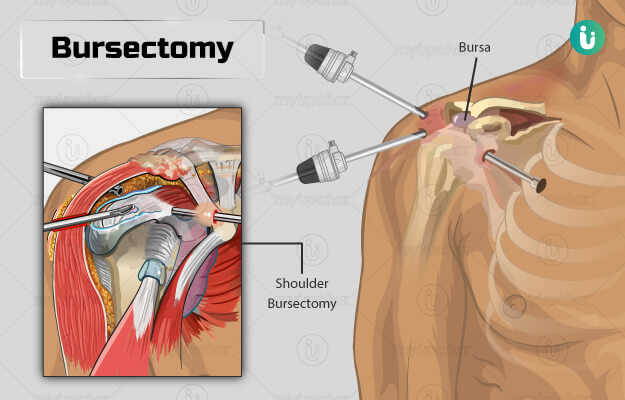Summary
Bursectomy is the surgical removal of a bursa or bursae. Bursas are small fluid-filled sac within joints that reduces friction and enables the free movement of bones, muscles, and tendons.
This surgery is often recommended to treat Bursitis or inflammation of bursae. Bursae are inflamed either by wear and tear, infections, injuries, or underlying conditions such as gout, arthritis and diabetes. Bursitis can lead to swelling, discomfort, loss of movement, redness, and fever.
Conservative treatments of rest and anti-inflammatory medications help cope with bursitis. However, if the severity of inflammation and pain increase, a surgery may be indicated.
Bursae are located throughout the body – in the knees, shoulders, hips, and ankles. The location decides the type of bursectomy to be adopted. Bursectomy in the shoulder can be done with endoscopy and by the use of surgical tools that make the surgery minimally invasive. On the other hand, bursectomy in the knees involves making an incision to remove the bursae. Depending on the location of the bursa, a bursectomy can last from 30 minutes to two hours.
The complications involved in such surgeries may include extensive bleeding, infections, or formation of blood clots. A follow-up visit to the doctor is generally scheduled two to three weeks after the surgery.












